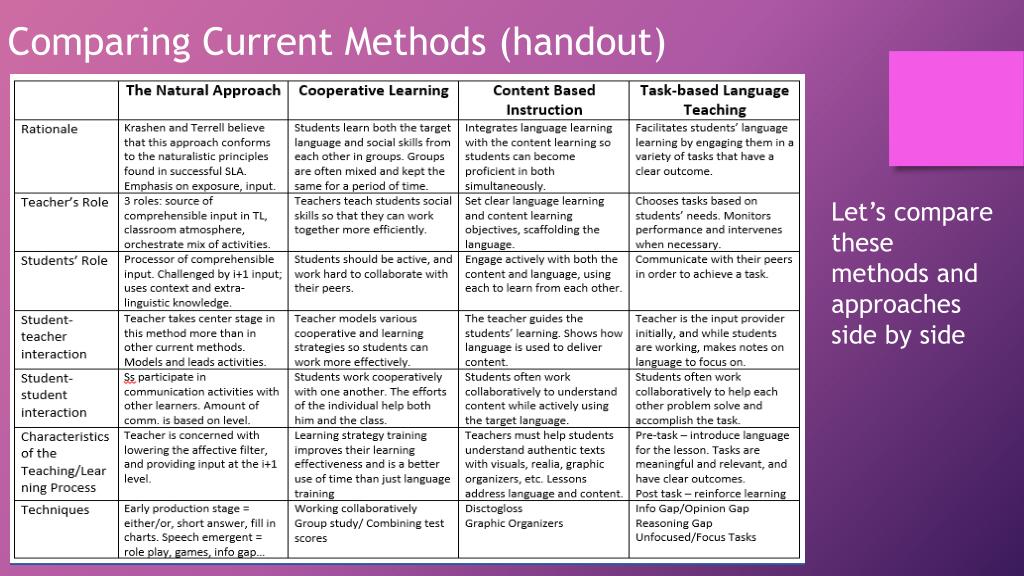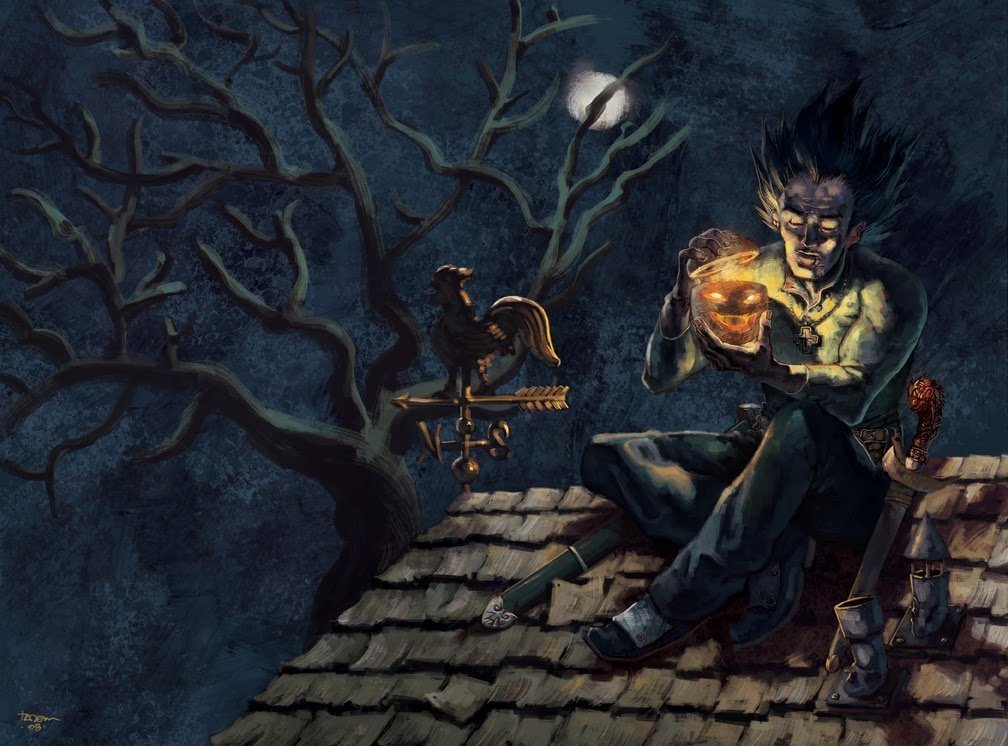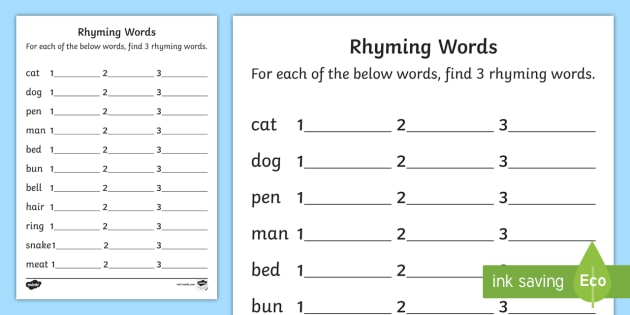Pandas favorite food
What Do Pandas Eat? And Other Fun Eating Facts
Bamboo is pandas’ favorite food: more than 99% of their diet is bamboo.
But how much bamboo do pandas eat every day? Apart from bamboo, what do pandas eat? Do pandas eat meat? All the secrets about pandas' diet are revealed in this article.
Content Preview
- Pandas Eat LOTS of Bamboo
- What Do Pandas Eat Besides Bamboo?
- The Eating Timetable of Pandas
- What Do Baby Pandas Eat?
- What Do Red Pandas Eat?
- FAQs about Giant Pandas’ Diet
Pandas Eat LOTS of Bamboo
Pandas like eating arrow bamboo, black bamboo, and 'water bamboo', along with about 20 other species. They prefer bamboo roots, shoots, and leaves, especially shoots.
Pandas eat different types and parts of bamboo according to the season. In spring and summer, they like eating different kinds of shoots; in autumn, they enjoy the leaves of bamboo; in winter, their main diet is bamboo roots.
With very little nutritional value in bamboo, pandas must eat 23–40 kg (50–90 lb) every day to meet their energy needs.
What Do Pandas Eat Besides Bamboo?
Pandas also eat fruits (they love apples the most), meat (small mammals), vegetables like carrots and ginseng, and fungus.
Captive pandas are also fed nutritious "panda cakes" and steamed corn bread. In the hot summer, they are fed ice with apples inside it to cool them down. The food is strictly selected, going through several rounds of examination before being fed to pandas, to make sure the pandas get enough nutrition and that it is healthy for the pandas.
Wild pandas prefer hunting for pikas (small mountain rabbits), bamboo rats, and other small rodents as the last part of their diet. Though pandas are not very fast, injured and wounded animals are catchable by pandas.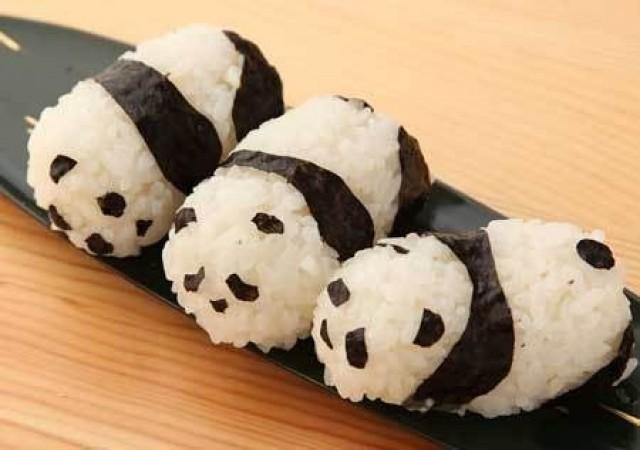
The Eating Timetable of Pandas
Giant pandas spend over 10 hours a day eating and foraging. Because they have a shorter gut (typical of carnivores), which is not efficient at processing vegetation, they need to keep eating that long to ensure they have enough energy. A typical panda day goes like this:
Captive pandas are fed a richer diet and don't have to look for food, so spend less time eating and more time sleeping. Normally, captive pandas are fed at 8–9am and 3–4pm every day. To avoid visiting the pandas when they're asleep, you are suggested to visit around feeding time.
What Do Baby Pandas Eat?
Baby pandas drink their mother’s milk until they are six months old and then they start eating bamboo.
Pandas have very little breast milk. So captive panda cubs are fed milk made from a mixture of milk, powdered milk, and various vitamins.
What Do Red Pandas Eat?
Red pandas, more similar to raccoons than bears, are a totally different species to giant pandas.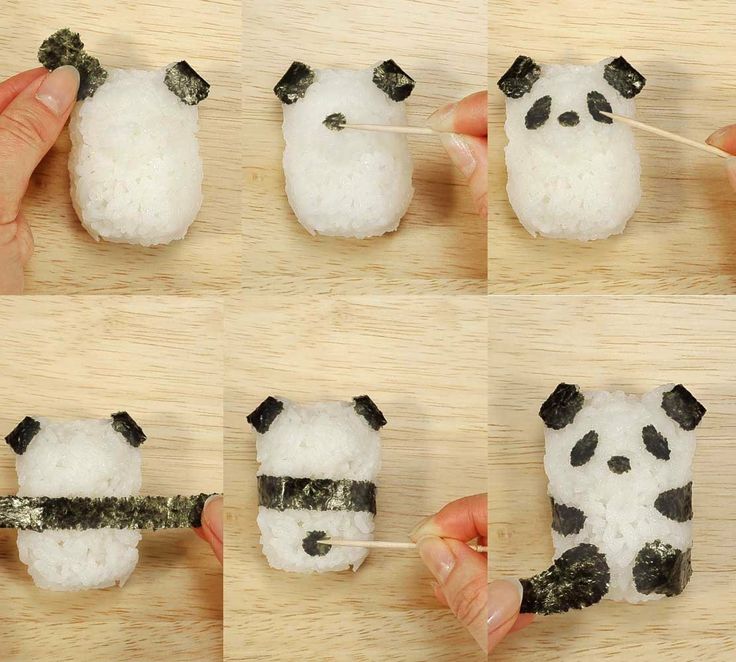 They also like to eat arrow bamboo, but also wild fruits, tree leaves, moss, and prey on birds or bird eggs, and other small animals and insects.
They also like to eat arrow bamboo, but also wild fruits, tree leaves, moss, and prey on birds or bird eggs, and other small animals and insects.
They especially like to eat sweet foods, such as apples and pumpkins. Red pandas are currently the only non-primates that can taste sweeteners.
FAQs about Giant Pandas’ Diet
1. Why Do Pandas Like to Eat Bamboo?
Bamboo is widely distributed and easily available in the wild. It is available all year around. Bamboo is rich in starch and can provide pandas with enough energy… if they eat a lot. That’s why pandas like to eat bamboo.
2. Do Pandas Eat Meat?
Yes, pandas can eat meat though now they are recognized as vegetarian. Pandas occasionally eat meat (usually carcasses, and sometimes bamboo rats).
3. Why Pandas' Diet Changed — from Meat to Bamboo
It is the result of environmental and genetic changes.
Pandas have canine teeth and possess the digestive system of a carnivore.
Fossil evidence, or lack thereof, suggests that about 7 million years ago, environmental changes killed off most of giant pandas' predecessors’ prey. Without any other choice, they became more and more vegetarian.
Fossilized panda skulls and paws and radio carbon dating show giant pandas had completely evolved to being bamboo eaters from 2 million years ago.
4. What Do Pandas Drink?
Pandas drink fresh water from rivers and streams.
Pandas drink water once or twice a day. Because bamboo shoots are more than 60 percent water, pandas can get water while eating bamboo shoots.
In spring, when bamboo shoots are plentiful, they can go without drinking water for a day or two.
Want to Make a Meal for Pandas?
In our Panda Volunteer Program, you can make cakes in different shapes for the pandas and feed a panda with your own hands.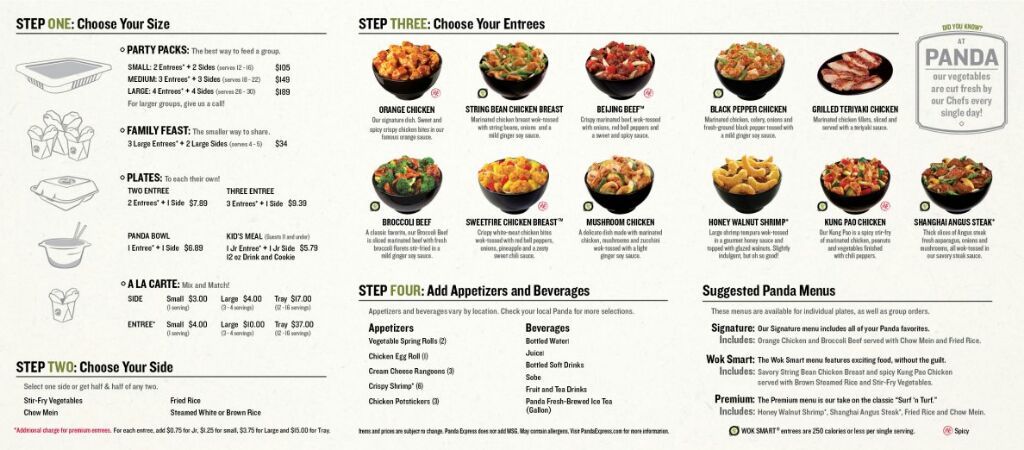 It is a good chance to learn about the cute pandas’ feeding habits and get close to them.
It is a good chance to learn about the cute pandas’ feeding habits and get close to them.
Contact us if you have any questions or requirements: we are confident that we can design a panda experience to suit you.
What Do Pandas Eat? - AZ Animals
Written by Rebecca
Updated: November 5, 2022
© Hung Chung Chih/Shutterstock.com
More Great Content:
Key Points
- Pandas in the wild eat bamboo, leaves, eggs, and rodents.
- When Pandas are pregnant, they are known to consume more protein, including lizards!
- Pandas enjoy eating wheat, pumpkins, kidney beans, and livestock feed while in captivity.
There’s often public confusion around the relationship between the two identified species of pandas — but it only makes sense when you consider that these animals are only distantly related and demonstrate dramatic differences in everything from physiology to habitat to behaviors.
The name panda is derived from the Nepali word for “bamboo eater”, and the link between these animals breaks down almost entirely according to dietary and nutritional habits.
Despite being the less well-known of the two, the facts show red pandas earned the name ten years before the giant panda in 1825. It’s an example of how challenging it was to trace evolutionary family trees before the advent of DNA testing, but it’s also proof of how convergent evolution can cause distinct species to develop the same highly specialized — and highly unusual — behaviors in isolation from one another.
Here’s everything you could want to know about how giant pandas and red pandas eat.
What Do Pandas Eat?
Pandas eat bamboo, leaves, eggs, and rodents.©A-Z-Animals.com
One way to better understand how natural selection influences diets is to identify animals as generalists or specialists. Generalists can subsist on a variety of different food sources — and this behavior has allowed omnivorous coyotes to find suitable ecosystems stretching over most of the United States and herbivorous elephants to serve as African gardeners pruning vegetation along migration routes that can extend over 60 miles.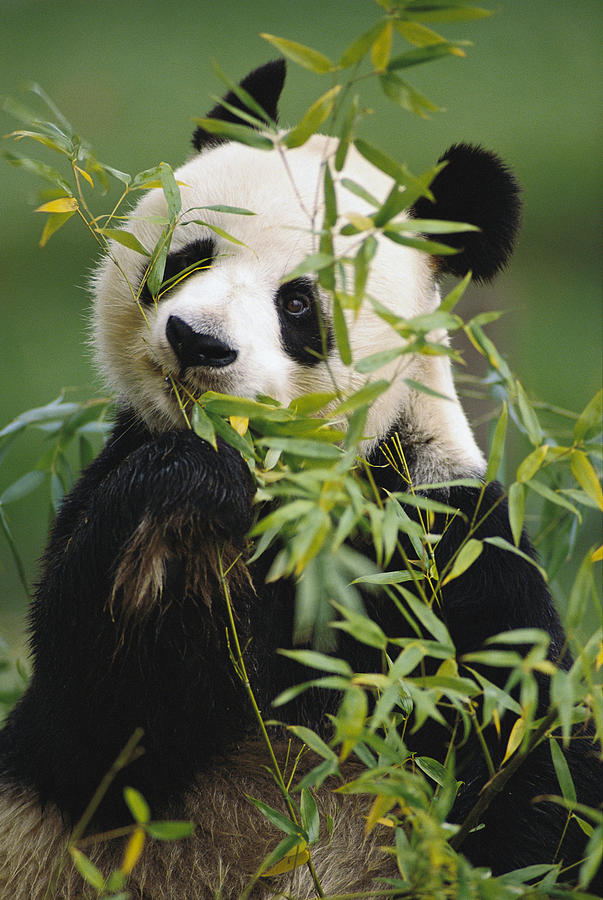
Specialists like flamingos and koalas — which feed primarily on shrimp and eucalyptus leaves respectively — often manage to flourish by finding a food source that’s readily available but has little competitive demand. But the practical facts behind specialization also make them particularly vulnerable to habitat destruction.
This is the case with red pandas and giant pandas, which have two of the most specialized and bizarre diets on the planet. The latter subsists of a diet that’s 99% bamboo species, while the former has a slightly more varied diet that’s between 85 and 95% bamboo. If that seems like a boring diet, there’s at least some solace in the fact that there’s a little variety sprinkled in there. Roughly 40 bamboo species can be found in the overlapping habitats of red and giant pandas.
Giant pandas are known to selectively feed on over 20 different varieties, while red pandas will usually feed on only one or two. Despite that, red pandas may exhibit a more varied diet overall since they feed on a wider range of foods outside of bamboo.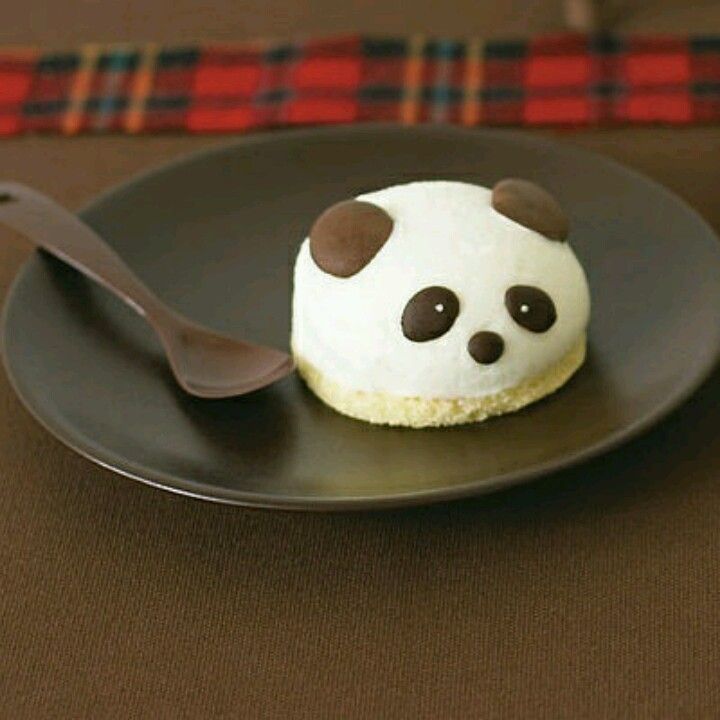
Giant pandas eat a diet that includes:
- Bamboo shoots, leaves, and culm (roughly 20 species, 99% of overall diet)
- Meat (pikas, rodents, insects)
- Carrion
- Crops (wheat, pumpkins, kidney beans, livestock feed)
Red pandas eat a diet that includes:
- Bamboo shoots and leaves (1-2 species, 85 – 95% of overall diet)
- Meat (insects, mice, rats, eggs, and small lizards or birds when pregnant)
- Plants (bark, lichen, roots, grass, flowers)
- Other vegetation (berries, fruits, mushrooms, acorns)
Additionally to bamboo and the occasional protein, pandas also love fruit! They especially love apples. Pandas have also been known to like something known as a “panda cake” which is basically just steamed corn bread. In the summer, pandas enjoy frozen ice with bits of apple inside them to cool them down. Furthermore, Pandas enjoy veggies like carrots, ginseng and even some funguses.
How Do Pandas Find Food?
Now you’ve discovered the answer to the question, “what do pandas eat?”, it’s time to look at just how they go about getting their food. Red and giant pandas have independently adapted to subsist mostly on bamboo, but they’ve also similarly developed “false thumbs” that allow them to grip and manipulate bamboo far more easily. But other physiological developments affect what parts of the bamboo plant each species eats.
Red and giant pandas have independently adapted to subsist mostly on bamboo, but they’ve also similarly developed “false thumbs” that allow them to grip and manipulate bamboo far more easily. But other physiological developments affect what parts of the bamboo plant each species eats.
The sharp and weasel-like teeth of the red panda are great for stripping bamboo shoots and leaf tips, but they leave the jointed stem known as the culm to giant pandas. This bear’s heavy, crushing teeth have been designed to effectively chew these stems.
Giant panda bears tend to selectively prioritize specific bamboo species and parts of the bamboo depending on the seasonal nutritional content. With fewer options to choose from, red pandas will usually supplement their diet with other food sources instead. Foraging is rarely an issue for either species of the panda, because bamboo tends to be available in abundance, and neither species has many natural predators.
How Can Pandas Live on a Diet of Mostly Bamboo?
Red pandas are endangered and are slightly bigger than a domestic cat.
©Jose Angel Astor Rocha/Shutterstock.com
Species largely manage to succeed by making the most efficient use of their energy, but pandas are an indication that low-efficiency diets can be sustainable when there’s both an abundance of the resource and minimal foraging or hunting needs. Giant pandas only digest 17% of the bamboo they eat, and they make up for that by consuming between 25 and 85 pounds of it a day. By contrast, red pandas can digest 24% of their bamboo diets and have to eat 20 to 30% of their body weight in a day to compensate. As a result, giant and red pandas need to spend 12 to 18 hours out of the day foraging and eating.
Did You Know Pandas Have the Digestive System of a Typical Carnivore?
Red and giant pandas may not be closely related, but their inefficiency at digesting bamboo is the result of the fact that they both have the digestive system of a carnivore. In contrast to the typical carnivore’s diet, bamboo is low in protein and fat and high in fiber. Both panda species have to be conscientious about energy consumption as a result. The facts of a 2010 genetic study indicate that both species developed their vegetarian diets after a mutation caused them to lose the ability to taste umami flavors, thus making meat an unappealing nutritional source.
Both panda species have to be conscientious about energy consumption as a result. The facts of a 2010 genetic study indicate that both species developed their vegetarian diets after a mutation caused them to lose the ability to taste umami flavors, thus making meat an unappealing nutritional source.
What Animals Eat Pandas?
The lethargic and high-volume diets of pandas would be unsustainable if they faced serious predation. Red and giant pandas have overlapping habitats and naturally overlapping predators as well. Snow leopards are the primary threat, but jackals and martens have been known to prey on them as well.
In both cases, these animals will typically only prey on panda cubs. Red panda cubs are also threatened by some birds of prey. The biggest threat to pandas comes from human poaching and deforestation.
Next Up…
- Are Pandas Dangerous? – Pandas are known for being cute, docile, and almost lovable creatures. Are they dangerous to humans if threatened? Keep reading to find out!
- Red Panda vs Panda: 5 Key Differences – What are the key differences between a Red Panda and a Panda? Are they the same species? Learn now!
- How Many Pandas Are In The World? – Are Pandas going extinct? How many are left? Find out!
The Featured Image
panda bear climbing on tree© Hung Chung Chih/Shutterstock. com
com
Share this post on:
About the Author
My name is Rebecca and I've been a Professional Freelancer for almost a decade. I write SEO content and graphic design. When I'm not working, I'm obsessing over cats and pet rats.
Thank you for reading! Have some feedback for us? Contact the AZ Animals editorial team.
Food for the panda, 6 (six) letters
Crossword question
Answer for the clue "Panda food", 6 (six) letters:
bamboo
Alternative crossword questions for the word bamboo
“Reed” accelerate
In aerial acrobatics, a metal pole
A tropical plant with a light and strong stem
The ancient Indonesian percussion musical instrument angklung is made from this grass
The fastest growing plant
Tropical "rod" cereal
Traditionally, the Japanese make a longitudinal flute from this plant - shakuhachi
Dictionary definitions for the word bamboo
New explanatory and derivational dictionary of the Russian language, T. F. Efremova. The meaning of the word in the dictionary New explanatory and derivational dictionary of the Russian language, T. F. Efremova. nine0005 m. Perennial tropical and subtropical plant with a strong and flexible hollow stem. Thickets of such a plant.
F. Efremova. The meaning of the word in the dictionary New explanatory and derivational dictionary of the Russian language, T. F. Efremova. nine0005 m. Perennial tropical and subtropical plant with a strong and flexible hollow stem. Thickets of such a plant.
Wikipedia The meaning of the word in the Wikipedia dictionary
Bamboo is a mountain range in western Mali, near the border with Senegal. This region was once a major center for gold mining, the metal was sold to Arab traders at the beginning of the 12th century. Mali still mines gold here and is currently ...
Examples of the use of the word bamboo in the literature.
In the Sakhalin taiga, where at every step you have to overcome the mountains of dead wood, hard wild rosemary or bamboo that gets tangled in your legs, sink up to your waist in swamps and streams, brush off the terrible midge, even free, well-fed walkers make no more than 8 miles a day , but a man, exhausted by prison, eating rotten salt with salt in the taiga and not knowing where the north is and where the south is, does not make even 3-5 versts in general.
The Son of the Bull harvested and cut them, and Zur, as a more skilled builder, tied the bamboos and intertwined them with vines with the dexterity inherent in the people of the Wa tribe. nine0003
Banyans, palms, bamboos, creepers and other tropical plants appeared.
Next to a parachute spread out on the water, in a boat, stood a Chinese fisherman, with a narrow gray beard and thin, knotty, like bamboo, bare legs.
There is no wind, the ground around the shelter is bare, and the bamboos are young and green.
In addition, it is good to enjoy rest and tranquility in the tea room, because there is no boasting and luxury, so even in the houses of rich people and officials you will find simple thatched huts with wooden supports and bamboo rafters, with simple, unsophisticated lattice windows , bamboo blinds, gate and entrance. nine0003
Source: Maxim Moshkov Library
What does a panda eat? Panda animal.
 Panda lifestyle and habitat
Panda lifestyle and habitat All giant pandas are beautiful and peaceful animals. Pandas are white with dark spots, although the white color may turn yellowish with age. Its camouflage pattern is suitable for living in the twilight of bamboo and in the conditions of the snowy season. They belong to the bear family, but unlike most of them, they do not hibernate. They live in groups and only in the spring during mating are single individuals found. Adult pandas reach 1.5-2 meters and weigh 130 kg or more. Although these animals are quite large, they can climb the tops of huge trees. nine0003
Interesting movies, series and TV programs can be seen on the Megogo website. There is a large selection of feature film screenings for all ages and preferences. User friendly interface and good playback quality.
Such bears live in places where there is a lot of reed and bamboo. Up to 30% of the world's panda population lives on the mountain ranges of southwestern China.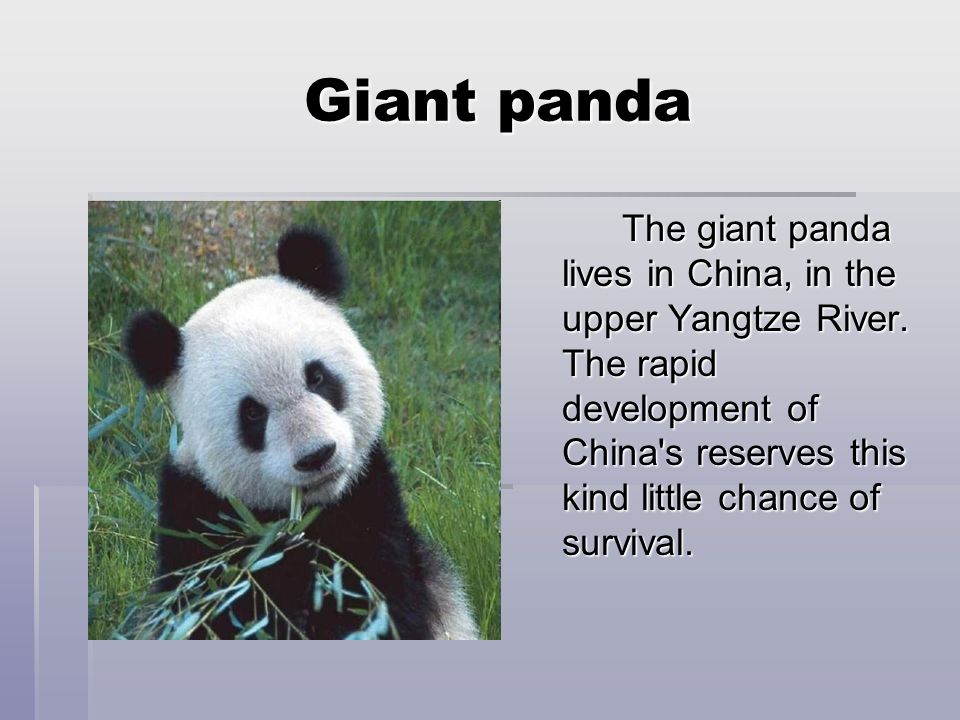 In total, there are about 3,000 giant pandas in the world. There are about 200 of them in zoos. In some places, pandas live in the mountains at an altitude of 1300-1400 meters, and in summer pandas can rise to a height of 4000 meters above sea level. Unfortunately, the woodworking industry is gradually destroying the free habitat of pandas. In 20 years, this area has halved. nine0003
In total, there are about 3,000 giant pandas in the world. There are about 200 of them in zoos. In some places, pandas live in the mountains at an altitude of 1300-1400 meters, and in summer pandas can rise to a height of 4000 meters above sea level. Unfortunately, the woodworking industry is gradually destroying the free habitat of pandas. In 20 years, this area has halved. nine0003
Pandas' favorite food is cane. Very rarely they feed on birds and small rodents, but bamboo still remains in the first place. This species of bear devotes 10 to 12 hours a day to its food, but if the nutritional value of the food is low, it may take more than 14 hours to eat. All the time free from sleep, the panda must eat. Depending on the time of year, free-living pandas eat leaves, shoots, or tough woody stems and tree bark.
In winter, the panda does not hibernate because it must continue to eat. Bears roam the forest looking for food in the snow. They descend from the mountains to a lower altitude, where the temperature is higher.
The main food is bamboo. Various types of this plant are suitable for her food. However, the digestive system of pandas is adapted to the digestion of animal food. She also has powerful molars. Plant foods cannot be digested completely in their bodies, unlike herbivores and ruminants, in which food is digested by 80%. Therefore, they have to consume a large amount of food. Adult males travel up to 18 kg per day to cover their energy costs. nine0003
Updated: 04/02/2016
Despite the fact that both the giant and red pandas are representatives of different families, apart from the name, they are united by the fact that almost everything that pandas eat is bamboo. Considering that both of these animals represent a detachment of carnivores, what the panda eats in nature is so unusual that it deserves careful consideration.
What does a panda eat: basic diet.
The diet is based on various parts of bamboo, from the most tender shoots down to the roots. Despite the fact that these animals have been eating bamboo for more than a million years, their digestive system is not well adapted to its digestion, which is much better at assimilating animal food, which these funny bears prefer to completely or partially ignore. nine0003
Despite the fact that these animals have been eating bamboo for more than a million years, their digestive system is not well adapted to its digestion, which is much better at assimilating animal food, which these funny bears prefer to completely or partially ignore. nine0003
Cases of meat-eating among giant pandas are rare and, as a rule, come down to eating carrion and small mammals. In addition, the giant panda eats small birds and eggs from ruined nests, which allows it to get at least a small amount of protein. However, such an addition cannot compensate for bamboo, and if bamboo dies in the habitat of this animal, the panda may die of starvation, as already happened in 1975 and 1983.
The red panda's diet is almost identical to that of its giant namesake, with the only difference being that mushrooms are also among the additional food sources. In addition, it can be noted that it is more picky and prefers the freshest and juiciest parts of bamboo. There is also reason to believe that what a panda eats in nature and what it prefers to eat while living in captivity is quite different. nine0003
nine0003
In captivity, red pandas generally ignore meat, leaning on plant foods. For this reason, some zoologists have suggested that the data on the omnivorous nature of the little panda is unreliable, and she is a vegetarian.
How much bamboo does a panda eat.
Given the rather impressive size of giant pandas, it becomes clear that they need a lot of food. However, even with this in mind, few people can imagine how much bamboo a panda weighing 150 kg eats. The daily "norm" of this plant for such an animal can reach up to thirty kilograms! This is about the same as if a person weighing 75 kilograms ate up to 15 kg of grass per day. The reason for this "gluttony" is the above-mentioned poor absorption of this plant. nine0003
As for red pandas, their own weight is not so great, and the consumption rate is not so high. However, if we take into account the ratio of the small panda's own weight and the weight of the bamboo it eats, it turns out that the panda eats very plentifully and even surpasses the giant panda in this indicator. When there is no shortage of bamboo, the red panda can eat over 4 kg of young shoots and 1.5 kg of leaves per day. Bearing in mind that the red panda almost never weighs more than 6 kg, the food/body weight ratio is 1:1. For comparison, the giant panda has a ratio of 1:5. nine0003
When there is no shortage of bamboo, the red panda can eat over 4 kg of young shoots and 1.5 kg of leaves per day. Bearing in mind that the red panda almost never weighs more than 6 kg, the food/body weight ratio is 1:1. For comparison, the giant panda has a ratio of 1:5. nine0003
Giant panda has another name - bamboo bear. This mammal belongs to the bear family, but has some characteristics of raccoons. Lives in China, is its official symbol. This is one of the endangered animals, the panda is listed in the Red Book. Now only about 1,600 individuals live in natural conditions, and the same number is in zoos.
Panda
A beautiful legend
Charming black and white teddy bear has earned fame and love all over the world. In China, there is an ancient legend that explains this coloring of the panda. nine0003
According to this legend, a long time ago a family of shepherds settled on the slopes of the mountains. Every day the shepherds took their flock of sheep to the pasture, where the little panda came to play with them.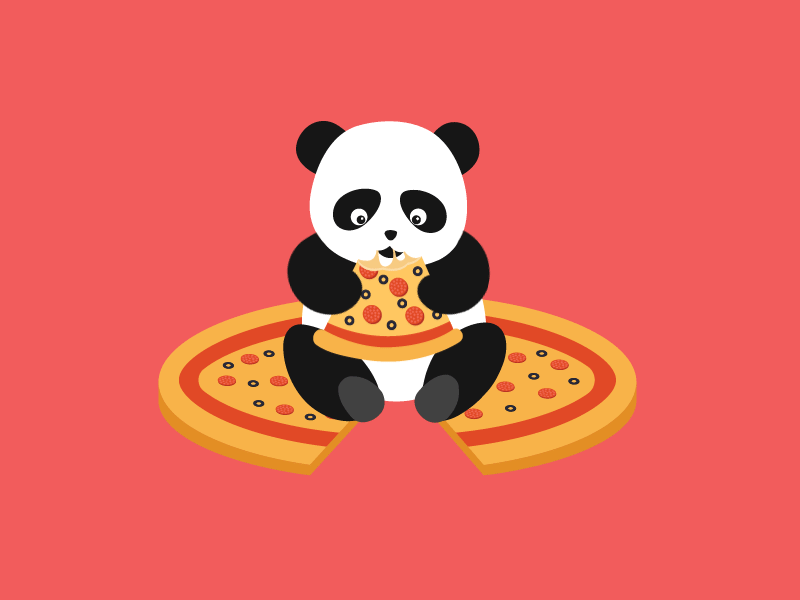 But one day a leopard attacked the sheep. The sheep ran away, but the little bear cub could not run fast and did not have time to hide. And he would not escape death. But the young shepherdess took a stick and drove the leopard away from the little bear cub, and she herself died from the claws of a terrible beast. Upon learning of this, the pandas cried and sprinkled themselves with ashes as a sign of mourning for the brave girl. Wiping away tears, they left black spots on their snow-white skin. Since then, the panda skin has been a mourning for the dead girl. nine0003
But one day a leopard attacked the sheep. The sheep ran away, but the little bear cub could not run fast and did not have time to hide. And he would not escape death. But the young shepherdess took a stick and drove the leopard away from the little bear cub, and she herself died from the claws of a terrible beast. Upon learning of this, the pandas cried and sprinkled themselves with ashes as a sign of mourning for the brave girl. Wiping away tears, they left black spots on their snow-white skin. Since then, the panda skin has been a mourning for the dead girl. nine0003
Characteristics of a panda
The panda's anatomy is unique, as it has features of both the bear and raccoon families. The classification of these animals was accompanied by controversy among scientists. After much research, they determined that giant pandas are bears.
Is the panda a raccoon or a bear?
Outwardly, the panda looks like a bear. Unlike ordinary bears, it has a different paw structure and a tail about 12 cm long.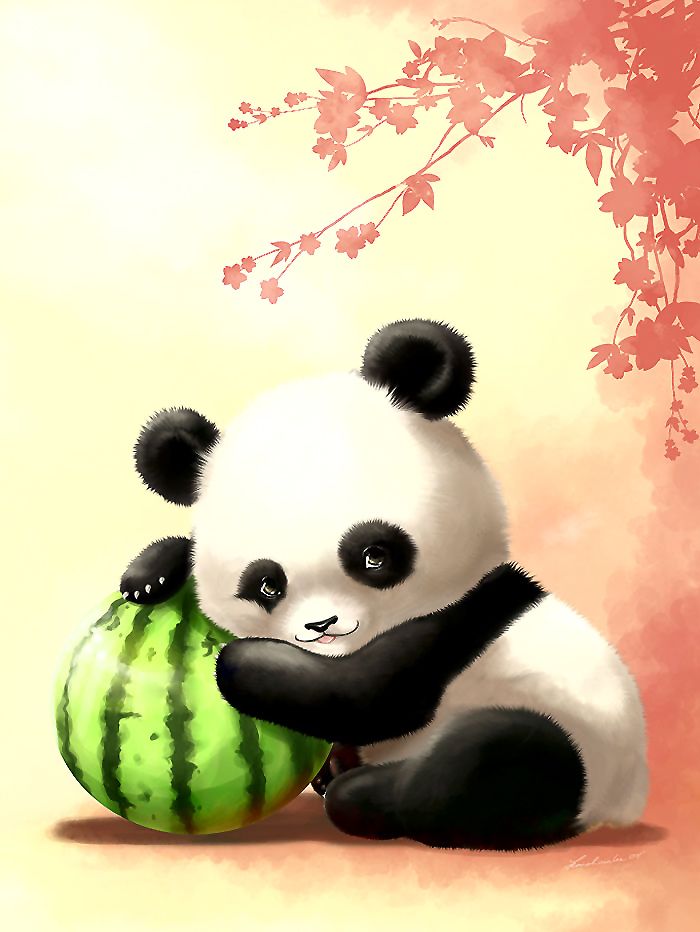 Pandas have a unique color - the main color of the fur is white, with black ears, legs and shoulders, and black spots near the eyes, creating the effect of glasses. All this, combined with a cute muzzle, makes the panda look like a big teddy bear. nine0003
Pandas have a unique color - the main color of the fur is white, with black ears, legs and shoulders, and black spots near the eyes, creating the effect of glasses. All this, combined with a cute muzzle, makes the panda look like a big teddy bear. nine0003
The structure of the panda's paw is "grasping". This helps the animals to climb high in the trees. They do this for different purposes - in search of food, to view the surroundings, just to play or relax, lying on the branches.
Panda eats
These animals live in dense bamboo thickets, which serve as food and shelter for them. Young bamboo stems and leaves are the main food of pandas. They hold the bamboo stalk in their paw, using the so-called "sixth finger", which is opposed to the rest. In fact, it is not a finger, it is an outgrowth on one of the bones of the paw. With it, pandas can hold objects in their paws, successfully climb trees, grab branches and perform other actions that are inaccessible to ordinary bears. nine0003
nine0003
The menu of these animals is almost 100% bamboo. Leaves and young shoots are eaten, but not of all types of bamboo, but only 10-15 out of 300 growing in China. A panda can eat 14 hours a day, and eats about 20 kilograms of food during this time.
Relations between people and animals
These are exceptionally peaceful animals, they never attack humans. In ancient books, the panda is called a symbol of peace, as it does not kill living beings. But there are very few of them left in the world, and the reason for this is man. People, chasing profit, exterminated these charming bears for the sake of a valuable skin, cut down bamboo forests, thereby depriving food and shelter not only of pandas, but also of other animals. nine0003
Panda on the symbol of the organization WWT
Nowadays, people are thinking about this problem. China has introduced the death penalty for killing and harming pandas. The habitats of pandas have been declared protected, and in zoos around the world they preserve and increase the number of these animals.
The only pity is that people for the sake of profit, without thinking, violate the natural balance, in order to restore it later with great difficulty and expense.
Panda is a carnivorous animal, and the main food is vegetation, and by and large they can be called vegetarians. nine9% of their food is bamboo. An adult of this animal consumes about 30 kg of bamboo daily. But according to technical characteristics, pandas, like almost all animals, are omnivorous, their diet includes some insects, eggs. Animal food, the panda consumes as needed, to increase protein.
If you have a computer and Internet access, then without much hassle, you can arrange leisure not only for yourself, but also for your children. A great variety of offers on the Internet, there you can pick up any cartoon, according to the wishes of your child. nine0003
Red pandas are mostly nocturnal, during the day the panda rests or sleeps in its shelter, it curls up and covers itself with its tail. If such animals are in danger, they climb a tree very quickly. On the ground cover they behave absurdly, without much dexterity and slowly, but as soon as they get on a tree, they fall into their element, but mostly they get their food on the surface of the earth.
If such animals are in danger, they climb a tree very quickly. On the ground cover they behave absurdly, without much dexterity and slowly, but as soon as they get on a tree, they fall into their element, but mostly they get their food on the surface of the earth.
The red panda is a carnivore, and the main food in the diet is young leaves and young shoots of bamboo, which is 9five%. Bears fill the remaining 5% of their diet with mushrooms, bird eggs, small rodents, and berries.
Small bears are more selective in their choice of food than big ones. Bamboo bears absorb plants almost completely, and small bears choose shoots, only young and tender. Pandas spend about 14 hours a day of their free time searching for food, this was revealed by observation. In the period of time where pandas lead a peaceful life, they give short notes of voice, this voice resembles the cooing of birds. Pandas are very peaceful animals in nature, they do not experience any particular inconvenience in captivity. nine0003
nine0003
Updated: 27/11/2014
Protection status: Endangered species.
Listed in the Red Book of the International Union for Conservation of Nature.
The giant panda is a quiet creature in a distinctive black and white costume, widely adored all over the world. The panda is also considered a national treasure in China. For WWF (World Wildlife Fund), the panda has a special meaning, since since 1961, the moment the organization was founded, it has been depicted on their logo.
The giant panda is considered a rare animal in China, and its population is limited to the provinces of Gansu, Sichuan, Shanxi in the central part of the country. The total range covers 29.5 thousand km², but only 5.9 thousand km² is the range of the giant panda.
Habitat
The giant panda lives in mixed coniferous, mountain and broadleaf forests where bamboo is present.
Description
In general, giant pandas have a round head, a stocky body and a short tail.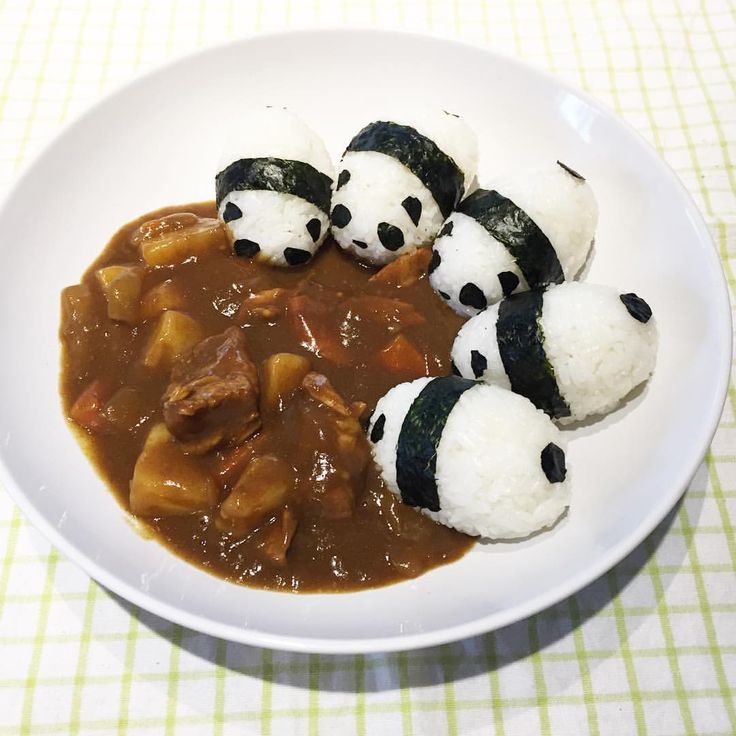 The height at the shoulders is 65-70 cm. These animals are well known for their characteristic black and white markings. The limbs, eyes, ears and shoulders are black in color, while the rest is white. In some regions, black actually has a deep red tint. The dark markings around the eyes may be the reason for the popularity of these animals, giving them a naive, juvenile appearance. The enlarged shoulders and neck area along with the reduced hindquarters create an amble. The baculum (the bone that formed in the connective tissue of the penis) is present in many other mammals. However, in other bears they are straight and forward, while in pandas they are S-shaped and point backward. nine0003
The height at the shoulders is 65-70 cm. These animals are well known for their characteristic black and white markings. The limbs, eyes, ears and shoulders are black in color, while the rest is white. In some regions, black actually has a deep red tint. The dark markings around the eyes may be the reason for the popularity of these animals, giving them a naive, juvenile appearance. The enlarged shoulders and neck area along with the reduced hindquarters create an amble. The baculum (the bone that formed in the connective tissue of the penis) is present in many other mammals. However, in other bears they are straight and forward, while in pandas they are S-shaped and point backward. nine0003
Giant pandas have several skull joints. They have a large sagittal crest that has become wider and deeper due to powerful jaws. The molars and small molars are wider and flatter than those of other bears, thanks to which pandas have developed the ability to crush tough bamboo. A notable feature of these animals is an additional opposing finger on the hand, known as the “panda thumb”. This has caused a lot of confusion in the past when classifying these bears. In fact, this is not a thumb, but a skin protrusion. nine0003
This has caused a lot of confusion in the past when classifying these bears. In fact, this is not a thumb, but a skin protrusion. nine0003
Reproduction
Female pandas become more active during the breeding season and use scent markings. A study between sexually active females and inactive pandas suggests that scent markings are related to sexual activity. Males may compete for females.
Mating occurs from March to May. The female's estrus lasts approximately 1-3 days. Females lose their previous activity during estrus, become restless and lose their appetite. Most cubs are born in late summer and early autumn. Pregnancy lasts about 6 weeks. At birth, babies are blind and helpless, and their body is covered with a small layer of fur. Newborn weight is 85-140 g.
After the birth, the mother helps the baby to lie down in a comfortable position for suckling. The cub can be applied to the mother about 14 times a day, lasting up to 30 minutes per feeding.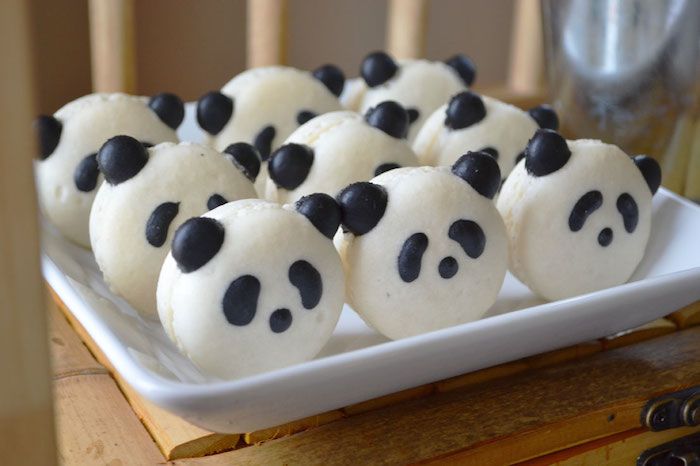 Bear cubs open their eyes at 3 weeks of age, move independently at 3-4 months, wean from mother's milk at about 46 weeks. The cub stays with the mother until 18 months. Giant pandas do not breed well in captivity.
Bear cubs open their eyes at 3 weeks of age, move independently at 3-4 months, wean from mother's milk at about 46 weeks. The cub stays with the mother until 18 months. Giant pandas do not breed well in captivity.
When studying the behavior of giant pandas in captivity, it was found that twins are born in half of the cases. The mother, as a rule, prefers one of them, and the second soon dies. nine0003
Lifespan
One giant panda has been known to reach 34 years of age in captivity, but this is rare. The average life expectancy of these animals is 26 years, and occasionally 30 years.
Behavior
Unlike many other bears, giant pandas do not hibernate. But they descend to lower altitudes during the winter. Giant pandas do not build permanent burrows, but take refuge in trees and caves. They are primarily terrestrial animals, but are also good climbers and swimmers. Giant pandas are mostly solitary except during the breeding season. Panda mothers play with their cubs, not only to calm the babies, but also for fun. Some mothers often wake up cubs to play with them. nine0003
Diet
Giant pandas have a strict energy reserve. They move little and tend to forage while moving. Giant pandas can spend 10-12 hours a day eating. Bamboo is the panda's main food source, but the animal only receives about 17% of the nutrients found in its leaves and stems. Giant pandas are well known for their upright feeding position, which allows their forelegs to freely handle the bamboo stalks. An extra finger on the panda's hand helps her to tear open the bamboo. The walls of the panda's stomach are extremely muscular, thanks to which woody food is digested, and the intestines are covered with a thick layer of mucus, which protects against splinters. nine0003
Their diet consists of: bamboo stems and shoots, fruits, plants, small mammals, fish and insects.
Threats
The giant panda's black and white coat may have served as protection against predators in the past when pandas were under pressure from predators. The black and white pattern gives them a resemblance to a zebra. Also, in the past, when these pandas lived in snowy regions, the white color may have helped these bears hide in the surroundings. However, today pandas live in almost snowless areas. Fortunately, today there are no predators that threaten pandas. nine0003
The black and white pattern gives them a resemblance to a zebra. Also, in the past, when these pandas lived in snowy regions, the white color may have helped these bears hide in the surroundings. However, today pandas live in almost snowless areas. Fortunately, today there are no predators that threaten pandas. nine0003
Role in the ecosystem
Giant panda populations are closely related to bamboo abundance and vice versa. The pandas help spread the bamboo seeds around the area. However, pandas significantly reduce the amount of bamboo, which makes it difficult for themselves to find food. Protected panda habitats will help preserve the natural ones.
Human economic value: Positive
Giant pandas have been hunted for their fur. In recent years, the hide has been seen as a valuable sleeping mat; it is handy, but is also believed to have supernatural protection from ghosts and to help predict the future through dreams. The panda skin is highly valued in Japan, its price reaches about $100.

